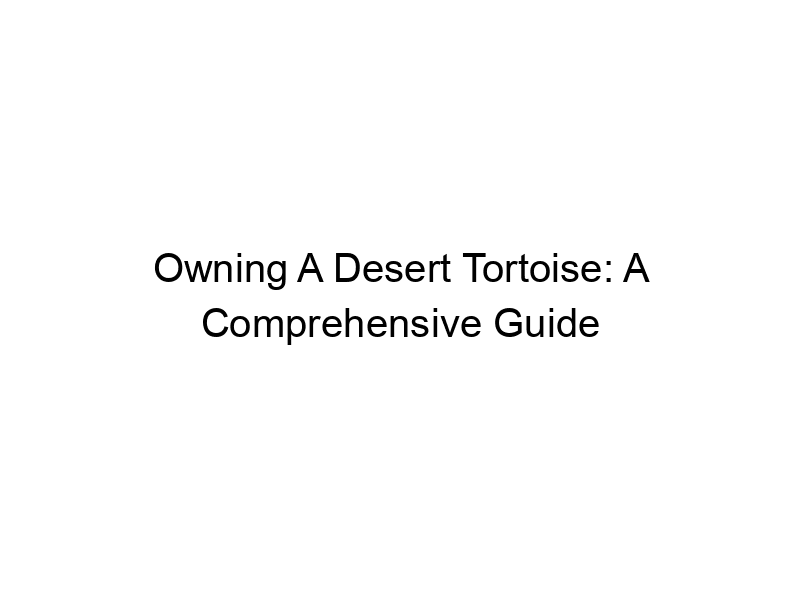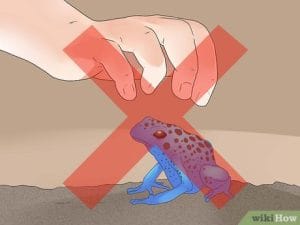Owning a desert tortoise is a significant commitment, requiring a deep understanding of their specific needs and a long-term dedication to their care. What to Expect When Owning a Desert Tortoise goes beyond the initial excitement and delves into the realities of providing a safe, healthy, and enriching environment for these fascinating reptiles. This comprehensive guide will equip you with the knowledge to make an informed decision and provide exceptional care for your desert tortoise, covering everything from habitat setup to veterinary care and addressing common misconceptions. You’ll learn about the legal aspects of tortoise ownership, the dietary requirements, potential health issues, and the long-term commitment involved.
There are several species of desert tortoises, each with slightly different needs. The most common species kept as pets are the Mojave desert tortoise ( Gopherus agassizii) and the Sonoran desert
tortoise (Gopherus morafkai). Identifying your tortoise’s specific species is crucial for proper care, as dietary and environmental needs can vary. Accurate identification often requires professional consultation with a herpetologist or reptile veterinarian.
Lifespan and Maturity
Desert tortoises are long-lived creatures, with a lifespan often exceeding 50 years in captivity. Reaching sexual maturity can take several years, depending on the species and environmental factors. Understanding this longevity is essential; you are committing to decades of care.
Habitat Setup: Creating a Suitable Environment
Enclosure Size and Material
The enclosure size is critical. A minimum enclosure size of 100 square feet is generally recommended for a single adult tortoise, but larger is always better. The material should be sturdy, escape-proof, and appropriate for the climate; outdoor enclosures might require mesh tops for ventilation and protection from predators, while indoor enclosures could use specially constructed tanks or custom-built habitats.
Substrate and Bedding
The substrate, the material forming the base of the enclosure, must be suitable for burrowing and should retain moisture. A good substrate mix might consist of a blend of sand, soil, and clay. Avoid using cedar or pine shavings as they are toxic to reptiles.
Temperature and Humidity Control
Desert tortoises require specific temperature gradients within their enclosure, with a basking area significantly warmer than the rest. Heat lamps and under-tank heaters are commonly used to achieve this. Proper humidity is also crucial, as overly dry conditions can lead to respiratory problems. Regular monitoring with a hygrometer is necessary.
Diet and Nutrition: Feeding Your Desert Tortoise
Understanding Dietary Needs
A desert tortoise’s diet should mimic its natural diet as closely as possible. This primarily consists of a variety of grasses, wildflowers, and succulents. Avoid feeding commercially available tortoise foods exclusively, as these often lack crucial nutrients.
Supplementation and Minerals
Occasional supplementation with calcium and vitamin D3 is often necessary, especially during periods of rapid growth or breeding. Over-supplementation can be harmful, so consult a veterinarian for proper dosages.
Harmful Foods and Toxins
Many common garden plants are toxic to tortoises. It’s crucial to research which plants are safe and which are potentially dangerous before introducing anything new to their diet. Some common toxic plants include rhubarb, azaleas, and oleander.
Handling and Interaction: Safe and Responsible Practices
Appropriate Handling Techniques
Handling your desert tortoise should be infrequent and gentle. Avoid lifting them by their shell or limbs. Always support their weight evenly. Excessive handling can cause stress and injury.
Signs of Stress and Illness
Learn to recognize the signs of stress and illness, such as lethargy, loss of appetite, respiratory distress, or unusual shell deformities. Immediate veterinary attention is crucial if any of these symptoms are observed.
Health and Veterinary Care: Preventing and Treating Illness
Common Health Issues
Desert tortoises are prone to various health problems, including upper respiratory tract infections (URTIs), metabolic bone disease (MBD), and shell rot. Prevention through proper diet and environment is essential.
Finding a Reputable Veterinarian
Finding a veterinarian experienced in reptile care is crucial. Not all vets are equally equipped to diagnose and treat tortoise illnesses. Ask for referrals from reptile breeders or other tortoise owners.
Legal Considerations and Regulations
Permitting and Licensing Requirements
Many regions have strict regulations regarding the ownership and trade of desert tortoises. Obtaining the necessary permits and licenses before acquiring a tortoise is essential to avoid legal penalties.
Long-Term Commitment and Responsibilities
Financial Considerations
Owning a desert tortoise is a long-term financial commitment. You’ll need to budget for enclosure construction or purchase, food, veterinary care, and any unforeseen expenses. The costs can accumulate over their long life.
Choosing the Right Tortoise
Choosing a Healthy Tortoise
Selecting a healthy tortoise from a reputable breeder is crucial. Look for alert, active individuals with clear eyes and no signs of shell damage or disease. Avoid purchasing tortoises from unreliable sources.
Environmental Enrichment
Providing Stimulation and Activity
Provide your tortoise with environmental enrichment to prevent boredom and encourage natural behaviors. This can include adding rocks, logs, or shallow water dishes to their enclosure. Rotate elements to keep the environment interesting.
Overwintering
Brumation and Hibernation
Many desert tortoise species undergo a period of brumation (a reptile’s equivalent of hibernation). Understanding the proper conditions for brumation and providing a safe environment during this period is crucial to their health and well-being.
Breeding and Reproduction
Considerations for Breeding
Breeding desert tortoises is a complex undertaking that requires extensive knowledge and experience. It is not recommended for beginner tortoise owners. Breeding success often hinges on carefully maintaining proper environmental conditions and providing optimal nutrition.
Common Myths and Misconceptions
Debunking Common Beliefs
Many myths surround desert tortoise care. It is vital to rely on accurate and updated information from reputable sources, such as herpetological societies and wildlife organizations, rather than unsubstantiated claims.
Comparing Desert Tortoises to Other Reptiles
Comparing Care Requirements
Comparing the care requirements of desert tortoises to other reptiles, such as box turtles or lizards, highlights the unique needs of these long-lived creatures. While some general principles may overlap, specialized care is crucial for desert tortoises.
Frequently Asked Questions
What is the average cost of owning a desert tortoise?
The initial cost of acquiring a desert tortoise and setting up its enclosure can range from several hundred to several thousand dollars, depending on the size and complexity of the enclosure. Ongoing costs include food, vet care, and potential repairs or upgrades to the enclosure, potentially accumulating to thousands of dollars over the tortoise’s long lifespan.
Are desert tortoises legal to own everywhere?
No. Many areas have strict regulations or outright bans on owning desert tortoises, particularly those involving endangered or threatened species. It is crucial to check local and state laws before acquiring a tortoise to avoid legal repercussions. Permits and licenses are often required.
How much space does a desert tortoise need?
A single adult desert tortoise needs a minimum of 100 square feet of space, preferably much more. The larger the enclosure, the better, allowing for natural behaviors like burrowing and exploration.
What are the signs of a sick desert tortoise?
Signs of illness include lethargy, loss of appetite, respiratory issues (like wheezing or labored breathing), eye discharge, shell abnormalities, and unusual droppings. Consult a veterinarian immediately if any symptoms appear.
Can desert tortoises be kept outdoors year-round?
It depends on your climate. In regions with mild winters, outdoor enclosures may be suitable with proper protection from extreme weather. In colder climates, indoor enclosures are necessary to provide adequate temperature control and prevent freezing.
What is the best way to handle a desert tortoise?
Handle your tortoise gently and infrequently. Never lift it by its shell. Support its weight evenly with both hands.
What should I feed my desert tortoise?
A desert tortoise’s diet should consist primarily of grasses, wildflowers, and succulents. Avoid feeding commercial tortoise foods exclusively and consult with a reptile veterinarian or experienced tortoise owner for a proper diet plan.
Final Thoughts
Owning a desert tortoise is an incredibly rewarding experience, but it demands a significant and long-term commitment. This guide has only scratched the surface of the complexities involved. Continuous learning and engagement with experienced keepers and veterinarians are essential for providing optimal care. Remember to prioritize your tortoise’s well-being above all else. Their long life depends on your commitment to understanding and meeting their specific needs. Before making the commitment, thoroughly research the legal requirements in your area, seek guidance from experienced keepers, and ensure you’re prepared for the financial and time commitment involved in providing a suitable environment and a healthy diet for the next 50+ years.
Don’t hesitate to connect with local reptile societies or online communities to further expand your knowledge and learn from experienced tortoise owners. Remember that responsible ownership is key to ensuring the health and longevity of your desert tortoise.




